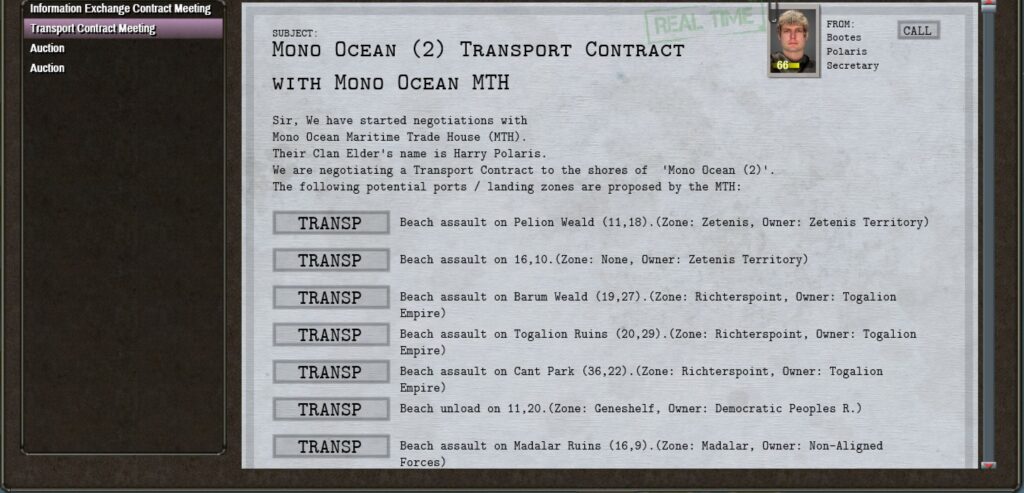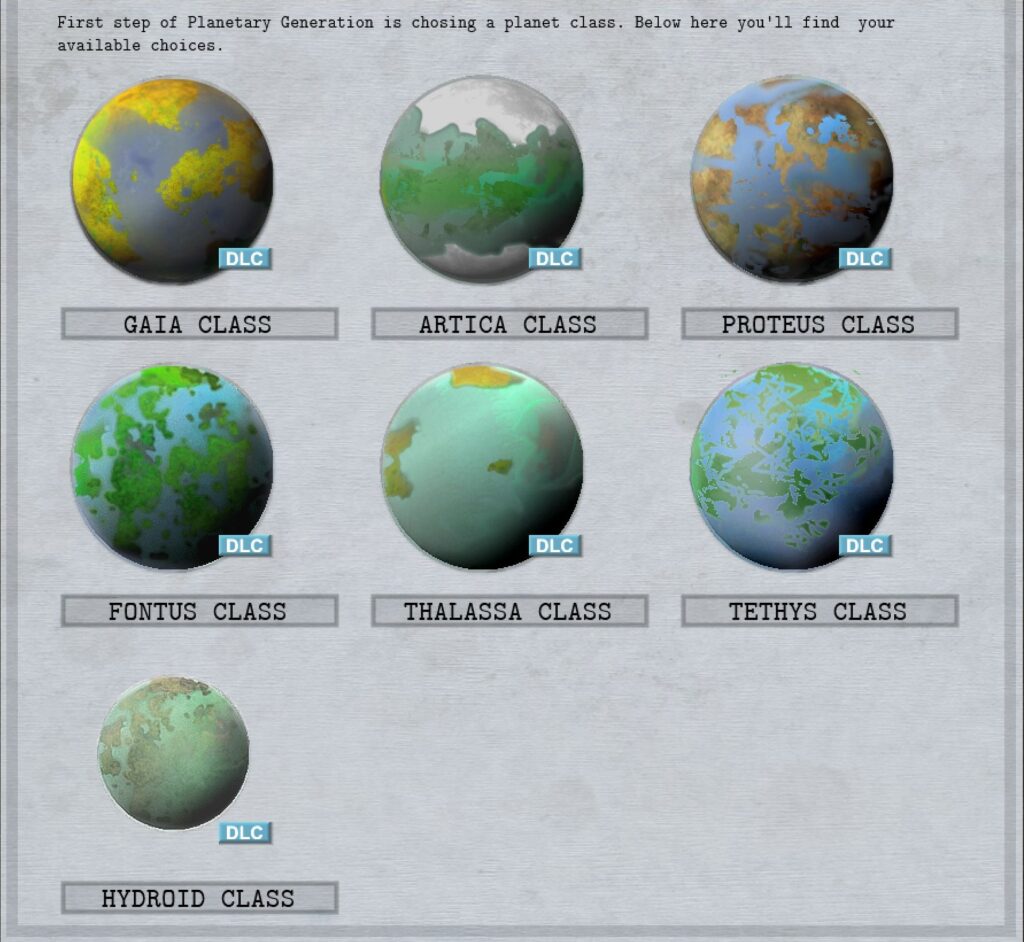Shadow Empire is a unique 4X strategy game developed by VR Designs, Matrix Games and Slitherine in December 2020, with a harsh learning curve based on the same engine as their previous turn-based strategy games Decisive Campaigns and Advanced Tactics. Receiving half a dozen patches over the two and a half years it’s been out, these mostly consisted of bug fixes and balance tweaks. However there have also been substantial extra features added like new planet types, sentient alien life forms (always fun whether you’re xenophobic or xenophilic) and improvements to existing systems like troop management. Launching today March 30, 2023, is the first DLC for the game called Shadow Empire: Oceania. This DLC adds the first new cohesive large systems in the form of oceanic planet types and maritime trade houses that are a political entity used to navigate these waters rather than a navy under the player’s own control. Players might prefer direct control over ships and naval transportation, which is reasonable, but this system does work well and provides for some interesting gameplay that will help distinguish games on different types of planets.
First up are the new planet types, without which the new maritime trading houses (MTH) will have little or no effect as the standard planet types do not have large bodies of water required. These provide a nice change from the landlocked planets that rarely had much water in them and there’s something about seeing continents and archipelagos that is just a lot of fun to play with. The planets range from the “earth-like” Gaia class with ~40-70% ocean coverage, the Artica class which is more frozen, the Proteus class which is drier, the Fontus class which is wetter, with more rain, rainforests and swamps, the Thalassa class with huge oceans and minimal landmasses, the Tethys class with many small continents and smaller islands, and the Hydroid class which appears to be more contiguous water with some island fragmentation off the continents. These should provide opportunities to struggle play with supply across huge oceans or struggle play with island hopping similar to WW2 pacific problems ranging through to lower emphasis on the MTH action but still have them relevant at times with much larger contiguous landmasses.
The MTH are similar to the existing trade houses that are AI managed entities the player can interact with but have more features and interactions specifically regarding oceans. After initial contact, you’ll be able to interact with them by stratagems when you gain them pseudo-randomly, or by purchasing shares in their company when they go up for auction. Once you have shares you start to gain influence per turn that you can spend to adjust their behaviour, such as improving your reputation, instructing them to build more ships, to pay more dividends and more. MTH interaction won’t dominate your gameplay, but it will be a regular thing you’ll want – or need – to exploit during your conquests. You can minimise the interaction to purchasing transport and logistics linking only when necessary, or you can make it a more regular part as you buy shares, influence the direction of the trading house and try to profit from its actions.



Having the base of the game engine be that of a turn-based wargame, combat is definitely a highlight of the game. You design armies based on what you’ve researched and the resources you have available, meaning you’ll usually need to make tradeoffs and sacrifices. Do you have enough metal to warrant producing tanks? Do you have enough fuel to keep them running after you produce them? Do you have enough population to risk losing all these infantry in a fight or should you find another way? Your armies need to be supplied too, and logistics play a very important role in determining success or failure. If you push your tanks out of your supply range, deep into an uninhabited desert, they’re not going to get any fuel and thus they’re not going to be able to move – or fight. This ties in with the new MTH for intercontinental supply contracts where they will hook directly into your supply chains on both sides of the transport line for seamless logistics.
The primary concern for the DLC would probably be value – do you get enough for what you pay for, an evergreen complaint that is generally more applicable to niche games such as this. Fundamentally you get two features – new planets and the MTH system which doesn’t sound like much, but it really does add a lot to the replayability of the game. The lack of player-controlled navies will also be an understandable sore point for some players and yes, having your own navies would likely be better in some ways but I don’t think that’s necessarily the case here, for me at least. There’s already plenty to do in the game with the ground combat, territory control and exploration with your units without needing to get into naval versions of them too. The political play, use of stratagems, and lack of complete control helps add more diverse gameplay than full control over a navy would provide. Those that don’t find it the best solution, should still find it a good, enjoyable solution. If you find yourself using the contract to move troops regularly it could start to feel cumbersome but that hasn’t happened to me yet.

Shadow Empire: Oceania is an easy sell for any fan of the base game and is perfect for anyone interested in the game but worried about it being a bit too much for them – which is definitely justified; the game isn’t for everyone. Shadow Empire already has that “one more turn” feeling that is essential for games like this, and the replayability thanks to the world generation system is first rate. The new planet types with their large amount of water to separate landmasses, providing chokepoints and strategic challenges are a great addition to this by themselves but the Maritime Trading Houses also provide for interesting extra political interplay, which is something this game excels at with its stratagems and diverse background management systems rather than “click and go diplomacy”.
Making do with what you gain access to and using it to meet your needs – or change your plans – and adding yet another variable to fight other factions over is a great addition to the game. New players will likely find that the ability to be on different continents to other major powers provides a less stressful way to learn and enjoy the game as they can bully minors around at their leisure without risk of a major powers army suddenly raining on their parade. While I don’t think existing players will dislike what is added, some might not find it enough value, or have really preferred a player-run naval system, but I definitely think Shadow Empire: Oceania was a worthwhile addition to the game.
This review utilised game and DLC keys provided by Slitherine. Shadow Empire (Steam, Slitherine store) is currently 45% off on both stores and the Shadow Empire: Oceania DLC (Steam, Slitherine store) is available at both stores on March 30, 2023.
Extras
I highly recommend players new and old alike check out Dastastics coverage of the game, be it tutorials or gameplay. Without him, my forays into Slitherines catalogue would be much more painful. There is also a useful steam guide that should help explain the games systems, and it isn’t common that this is needed anymore, but the 400-page manual downloadable from Steam or Slitherine is a great reference too. I like WASD movement in my games including for scrolling the map, and where it’s not possible in-game (like here) I force it with Autohotkey. Drop a comment below if you’re interested and I’ll share my script.
#roundtablecoop









